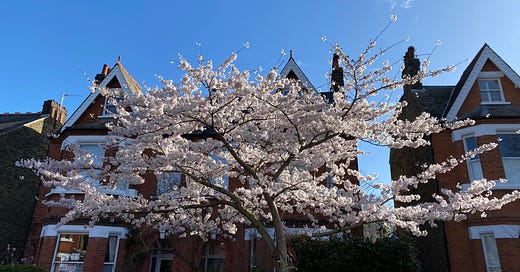Creativity, innovation, work and health
Having a meaningful say in what we do at work relates to autonomy, one of the protective factors against work-related stress. Creativity builds on this and can empower people to engage with challenges at work and identify ways to achieve change and quality improvement. Employee involvement and consultation in decision making, including seeking input on how to improve working conditions can help organisations foster a culture of creativity and innovation.
Creativity should not be limited to a particular field or people at the top of the organisational hierarchy. Organisations that encourage all employees to be creative often have the competitive edge. At Google, a policy encouraging all employees to spend 20% of their time on side projects led to some of their most innovative products, including Gmail. Organisations that struggle with innovation and resist change can fail to keep up with changing market conditions.
I am currently doing a PGCert in University Learning and Teaching at Imperial College London. One of the highlights has been meeting people working in different disciplines. Maria Apud Bell is a design scientist who works between the Royal College of Art and Imperial College London to help scientists and artists work together on design engineering. She uses the same skills to help organisations in the UK and beyond to harness the creativity of their workforce to problem solve. I asked Maria about her top tips on getting people from different disciplines across organisational hierarchies to collaborate and work creatively. Here’s what she had to say.
Are you creative.. or not?
Many people think creativity is binary. You either have it, or you don’t. This is not the case. Creativity is a skill that anyone can develop or train. When people in my workshops say “I am not a creative person” I explain that just like any other skill, such as presentation skills, creativity is something that might come more easily to some people than others. But it is a skill that anyone can acquire and perfect.
How do you get into the right frame of mind for creativity?
Setting the scene to force the creative mindset is really important. The barriers to creativity often lie in fear of failure of fear of suggesting something ridiculous or pointless. People need to be warned that they will need to stop thinking critically to create. Editing themselves or their ideas will hamper creativity. To truly ‘let go’ and be creative people need to feel safe. This can be achieved in different ways. Sometimes, I do something intentionally ridiculous to set the tone in a workshop so participants are not worried about being judged. Other methods that can help include sharing examples of initial failures that became successful creative processes.
The makeup of the group is also important. Group dynamics are driven by people’s personalities. Diversity comes in here too, as a range of life experiences propel creativity. Teams made up of people along an organisational hierarchy adds to this richness but it is essential to create an environment where junior colleagues feel empowered to participate. Leaving people in a position of vulnerability holds them- and therefore the whole group back. Setting up balanced groups allow everyone to contribute and achieve more creativity.
How does the creative process actually work?
The whole creative process is driven by stopping people from thinking too much, which interrupts creative flow. People should be encouraged to develop large volumes of ideas. This helps them feel more relaxed about sharing their ideas and selecting some to pursue later down the line. With so many ideas going around the room, the stakes are low. With only a handful of ideas, people are less liberal and tend to keep them close. The creative process is not the place for criticism. Ideas are built on in positive ways only…using positive reinforcement to propel concepts forwards. People should not edit ideas before sharing. Writing is discouraged, as it can often requires an idea to be edited into an articulate form. Doodling is preferred!
Being spontaneous is not always easy for people new to that way of doing things. I use tools such as flashcards and objects to encourage lateral thinking and spark creativity. Hints that people can tangentially bring into their headspace help them not to feel stuck. It can be useful to mentally remove barriers and encourage people to imagine they are in the future, or that resource is not a constraint. Creativity is energy intensive and the process works best in short sessions with regular breaks.
What happens with the ideas next?
A wrap up is important to move the creative process forward and make it meaningful and relevant to the challenge the group is trying to solve. Generating discussion of the ideas put forward can lead to ideas being ‘clustered’ which removes ownership and helps different groups get on board with each other’s ideas. It also means useful aspects of different ideas can be combined. Clusters can be rated according to values or factors of strategic importance – for example: resource or sustainability.
Moving towards implementation is another (more structured) creative process. Ideas from the original creative process will morph again!
This article was researched with the help of ChatGPT



